Middle Eastern Food – What Are The Best Arabic Recipes?


If you’re hungry and you know it, then you’ve found the right article! There is a reason why Middle Eastern recipes have been gaining popularity in recent years. It’s an art in itself to combine so many spices and flavors in a perfectly balanced dish. You will find that many dishes have the same name across these Middle Eastern countries. However, they might taste entirely different based on the region. These differences happen due to the availability of native ingredients. For example, what spices people traded in the region and what they offered at the marketplace in the past. In essence, Middle Eastern food today is a culinary college which its past defined it. Of course, each country will have its own national dish, so let’s take a look at what these consist of.
This Jordanian dish consists of lamb or mutton pieces placed on top of (shrak) markook bread (khobez markook). Then, Jordanians put yellow rice (ruz asfar) on top of the bread. Jameed is the special type of dried yogurt that gives its distinct flavor. People simply pour it on top of the rice and lamb. Finally, they add cooked pine nuts and almonds as garnish.

This is the traditional meal and national dish of the KSA. Locals make it with rice (usually long-grain, and almost always basmati), meat, vegetables, and a mixture of Arabic spices. The spices used in kabsah are largely responsible for its taste. Generally, you will find black pepper (filfil aswad), cloves, cardamom (hal), saffron (sa’fran), cinnamon (qirfa), black, dried lime, bay leaves and nutmeg. The main ingredient that accompanies the spices is the meat or seafood. People usually use chicken, goat, lamb, camel, beef, fish or shrimp.
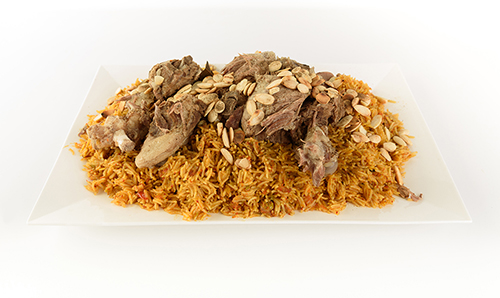
This Syrian dish is made of bulgur, minced onions (basal), and finely ground lean meat. The meat can be either beef, lamb, goat, or camel. The taste is given by Middle Eastern spices (like cinnamon, nutmeg, clove, and allspice). Other types of kibbeh may be shaped into balls or patties and baked, cooked in broth, or served raw.
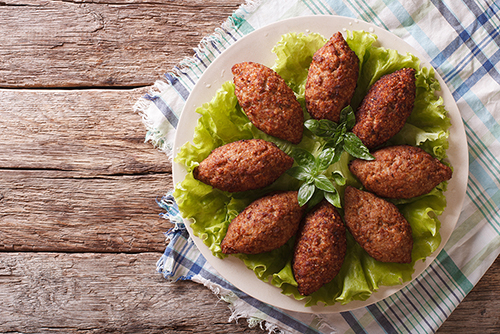
This is the national dish of Palestine. The main component is taboon bread (khobez taboon). Palestinians top it with pieces of cooked sweet onions, sumac (summaq), saffron, and allspice. For large dinners, it can be topped by one or two roasted chickens.
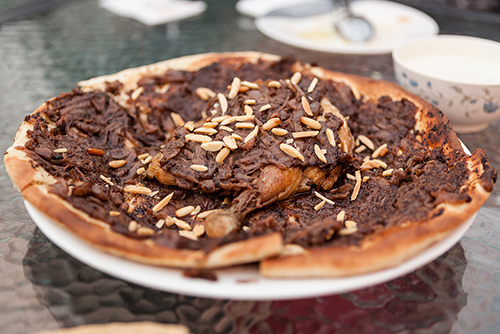
Egypt has a very rich cuisine with many unique customs. These customs also vary within Egypt itself. For example, in coastal areas the diet relies heavily on fish. Interestingly though, Egyptian cuisine is rich in vegetarian dishes. Koshary is the perfect example of this and is also the national dish. It’s made of rice, macaroni, and lentils (a’adas) mixed together; topped with a spiced tomato (bandora) sauce and garlic vinegar and garnished with chickpeas (hummus) and crispy fried onions. Sprinklings of garlic juice, garlic vinegar, and hot sauce are optional.
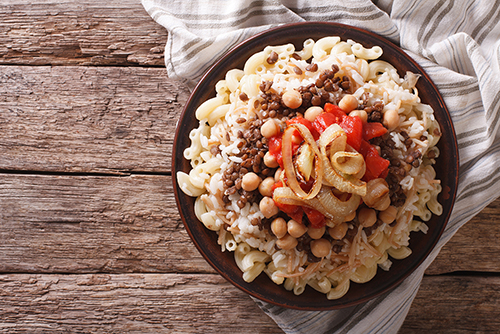
This is a Middle Eastern food dish from Mesopotamia. It’s basically seasoned and grilled carp. This dish is often considered the national dish of Iraq. The fish is cut in two identical halves from the back while leaving the belly intact. This way, the fish is opened in the shape of a large, symmetrical circle. From there, the cook bastes the inside of the fish with a marinade of olive oil, rock salt, tamarind, and ground turmeric (kurkum).

Mandi is the perfect example of an Arabic food that has perfectly combined spices in order to create an explosion of flavors. It consists mainly of meat and rice with a special blend of spices (baharat): cinnamon, cloves, anise (yansoon), cumin seeds (kammun), coriander seeds (bothor al kuzbara) and many others depending on the household.
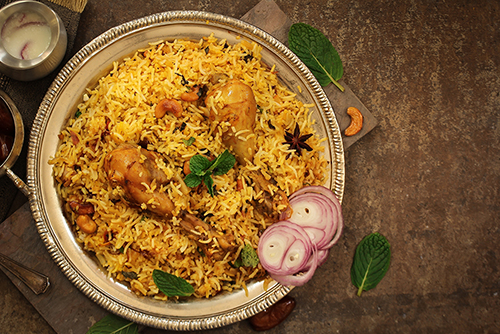
Is your mouth watering yet? Ours sure is! Middle Eastern food culture is quintessential in the region, as it gathers family and friends. Let us know which one of these Arabic dishes sparked your appetite more. If you want to learn more about Arabic food or the Arabic language in general, don’t forget to download our Arabic learning app Kaleela!